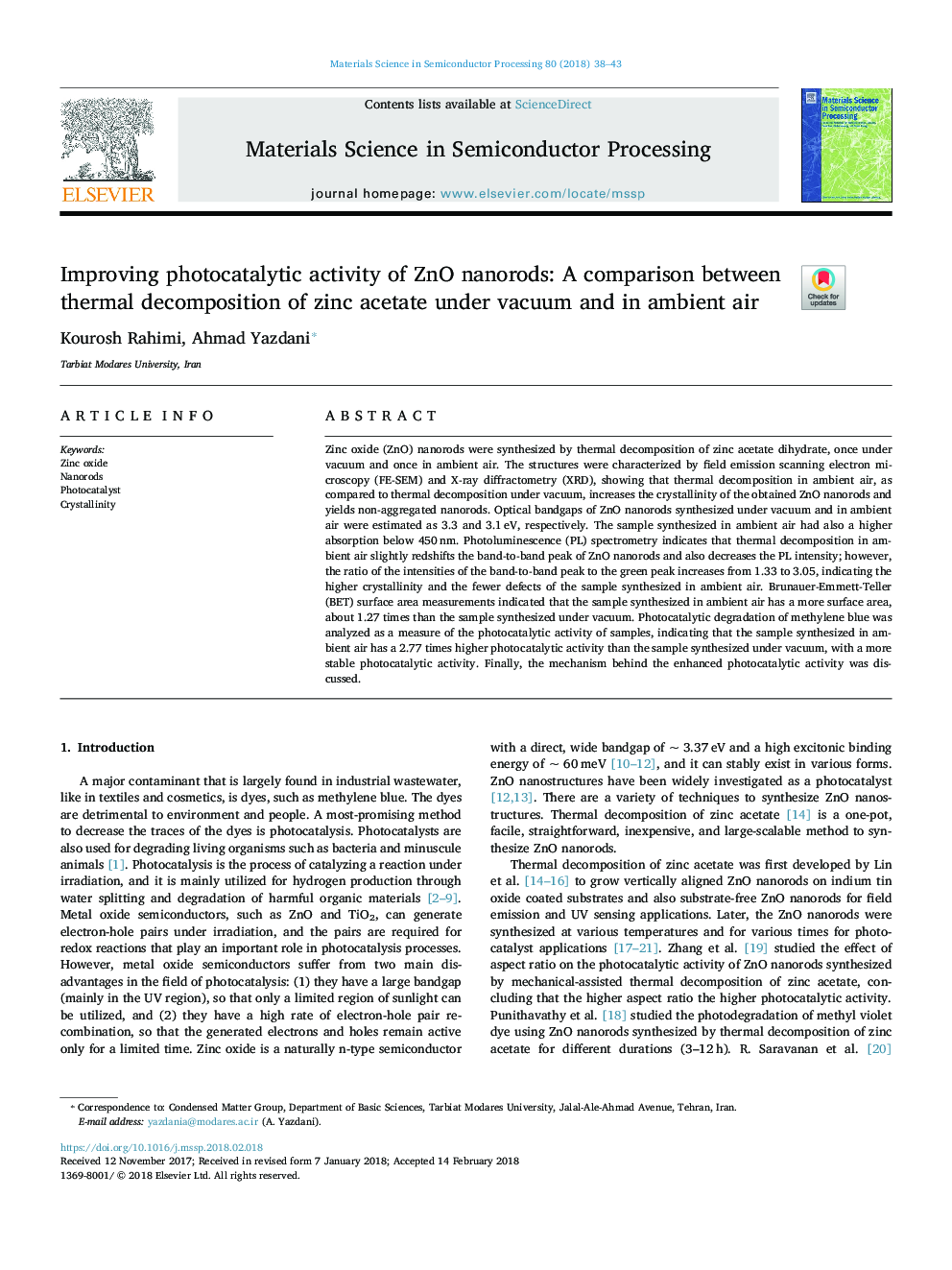| Article ID | Journal | Published Year | Pages | File Type |
|---|---|---|---|---|
| 7117742 | Materials Science in Semiconductor Processing | 2018 | 6 Pages |
Abstract
Zinc oxide (ZnO) nanorods were synthesized by thermal decomposition of zinc acetate dihydrate, once under vacuum and once in ambient air. The structures were characterized by field emission scanning electron microscopy (FE-SEM) and X-ray diffractometry (XRD), showing that thermal decomposition in ambient air, as compared to thermal decomposition under vacuum, increases the crystallinity of the obtained ZnO nanorods and yields non-aggregated nanorods. Optical bandgaps of ZnO nanorods synthesized under vacuum and in ambient air were estimated as 3.3 and 3.1â¯eV, respectively. The sample synthesized in ambient air had also a higher absorption below 450â¯nm. Photoluminescence (PL) spectrometry indicates that thermal decomposition in ambient air slightly redshifts the band-to-band peak of ZnO nanorods and also decreases the PL intensity; however, the ratio of the intensities of the band-to-band peak to the green peak increases from 1.33 to 3.05, indicating the higher crystallinity and the fewer defects of the sample synthesized in ambient air. Brunauer-Emmett-Teller (BET) surface area measurements indicated that the sample synthesized in ambient air has a more surface area, about 1.27 times than the sample synthesized under vacuum. Photocatalytic degradation of methylene blue was analyzed as a measure of the photocatalytic activity of samples, indicating that the sample synthesized in ambient air has a 2.77 times higher photocatalytic activity than the sample synthesized under vacuum, with a more stable photocatalytic activity. Finally, the mechanism behind the enhanced photocatalytic activity was discussed.
Related Topics
Physical Sciences and Engineering
Engineering
Electrical and Electronic Engineering
Authors
Kourosh Rahimi, Ahmad Yazdani,
